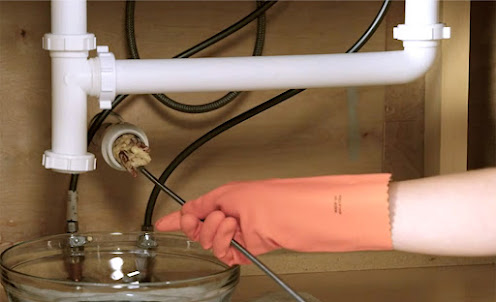Direct Or Indirect Plumbing Systems
There are two fundamental techniques for transferring water throughout the home from the rising main to required: indirect and direct.
System of indirect plumbing The primary purpose of the rising main in an indirect approach is to feed water into a cold water cistern (sometimes incorrectly referred to as a tank), which is typically located in the loft. Most of the house's faucets and plumbing fixtures will obtain their water supply from this cistern, which is kept lopped up from the rising main through a ball valve. To provide a drinking water collection, at least one tap, often the cold water lap in the kitchen, must be fed directly from the rising main.
Depending on the local water by-laws, one, two, or more direct hookups to the rising main may be built - one for an outdoor water lap and one for a cold water supply to a washing machine or dishwasher, for example. An additional connection might be built for an electric shower. Tankless water heater installation near me
Most indirect plumbing systems contain two pipes (commonly called draw-off pipes) that drain water from the cistern. One pipe supplies WCs and cold water taps in bathrooms and other rooms with basins. The other feeds a hot water cylinder, which stores the water and heats it with a boiler or an electric immersion heater. Coldwater cisterns may contain additional draw-off pipes to accommodate certain bidets or showers or make pipe runs to specific fittings more convenient.
Hot water taps collect water from a pipe attached to the top of the hot water cylinder; bidet and shower systems may require separate connections. A tube extending back over the cold water cistern will offer a safety vent for air bubbles and steam to escape from the hot water cylinder.
To operate on a plumbing system or halt a leak or burst, some aspects of the system must be isolated and emptied of water. Only one stopcock or valve is required in a system, in principle. This should be as close to the point where the main service pipe enters the home as practicable to isolate the entire house from the water supply. Two draincocks are required immediately above the main stopcock to drain the rising main and any branch pipes attached. Another is as low down on the tube supplying the hot water cylinder as feasible to drain the cylinder. Turning on the taps will empty the pipes supplying hot and cold taps linked to the cistern, as well as the cold water cistern itself. This, however, will not deplete the hot water cylinder.
In reality, it is preferable to add more stop valves. Some plumbing system elements may be separated from the rest, rather than having to empty the entire system every time repair work is performed. This means typically installing gate valves at each cistern draw-off. Small isolating valves can be installed right before each tap or fitting. There should be no valves on the hot water cylinder outflow pipe.
Plumbing systems with direct connections
All cold taps, WCs, and other fixtures in a direct plumbing system are fed directly from the rising main. Suppose the hot water is provided by a storage or hot water cylinder rather than an instantaneous heater. In that case, it is frequently supplied by a small cold water cistern, generally located on top of the cylinder.
Which system is the most effective?
There are three significant advantages to using an indirect plumbing system. First, and perhaps most crucially, because the cistern isolates most of the design from the mains, water is less likely to be sucked back into the mains (a process known as back-siphonage), posing a far lower danger of contamination of the water supply. Second, the system functions at constant water pressure, so you don't have to worry about changes in mains water pressure - this is especially crucial for some types of showers that require nearly equal hot and cold water pressures. Finally, the cistern serves as a backup water supply if the mains fail.
A direct plumbing system is less complicated and less expensive than an indirect one. However, some of the fittings used may need to be carefully built to reduce the possibility of polluting the mains.
The local water supply undertaking will establish the system you are permitted to install. The most recent alternative is to install an unvented hot water system. The cold supply to the home is the same as in the previous arrangement, but the (unique) hot water cylinder is also fed directly from the rising main. Unvented hot water systems must be built and maintained correctly, but they have significant advantages over conventional methods.

Comments
Post a Comment